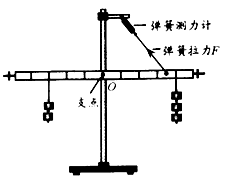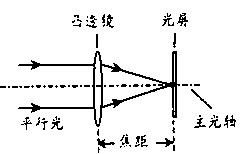(12分)小明、小亮和小敏在实验室分别做三个小实验,实验过程中,他们分别遇到了不同的困惑。有些困惑,他们通过交流已经提出了解决方案,但还需要听听你的意见;有些困惑,需要你帮助解决。

(1)小明的实验是“探究杠杆的平衡条件”, 他在完成教材中的探究任务后,又多加了一个弹簧测力计继续进行探究。他的困惑是:在图所示杠杆已经平衡的情况下,不知道怎样测弹簧拉力的力臂。请你在图中帮小明作出弹簧拉力F对支点O的力臂。
(2)小亮的实验是“探究同种物质的质量与体积的关系”,他选择了三个体积不同,质量分别为89 g、178 g、356 g的实心铜块做实验。实验中,他用每次都盛有30 cm3水的量筒分别测出了三个铜块的体积,并将数据记录在了自己设计的表格中。

小亮在计算质量与体积的比值( m/V )时,发现其中的一个测量数据有错误,这个测量数据(原始数据)是__ __(填该数据的数字和它的单位)。
小亮的困惑是:这个错误是怎样产生的。请你帮他找错误产生的原因:__ _
正确的数据应该是 (填该数据的数字和它的单位)
(3)小敏的实验是“探究凸透镜成像的特点”。
她的困惑是:不知道实验室准备的凸透镜的焦距。
小亮给他提供的解决方案是:根据图所示的设计方案图进行实验.测出焦距。

你的意见:小亮的“方案”是 (填“可行”或“不可行”)的。
A.如果“方案”可行,则在具体操作中应该注意:使像的大小与亮度是 。
B.如果“方案”不可行,请提出你的解决方案:_ 。